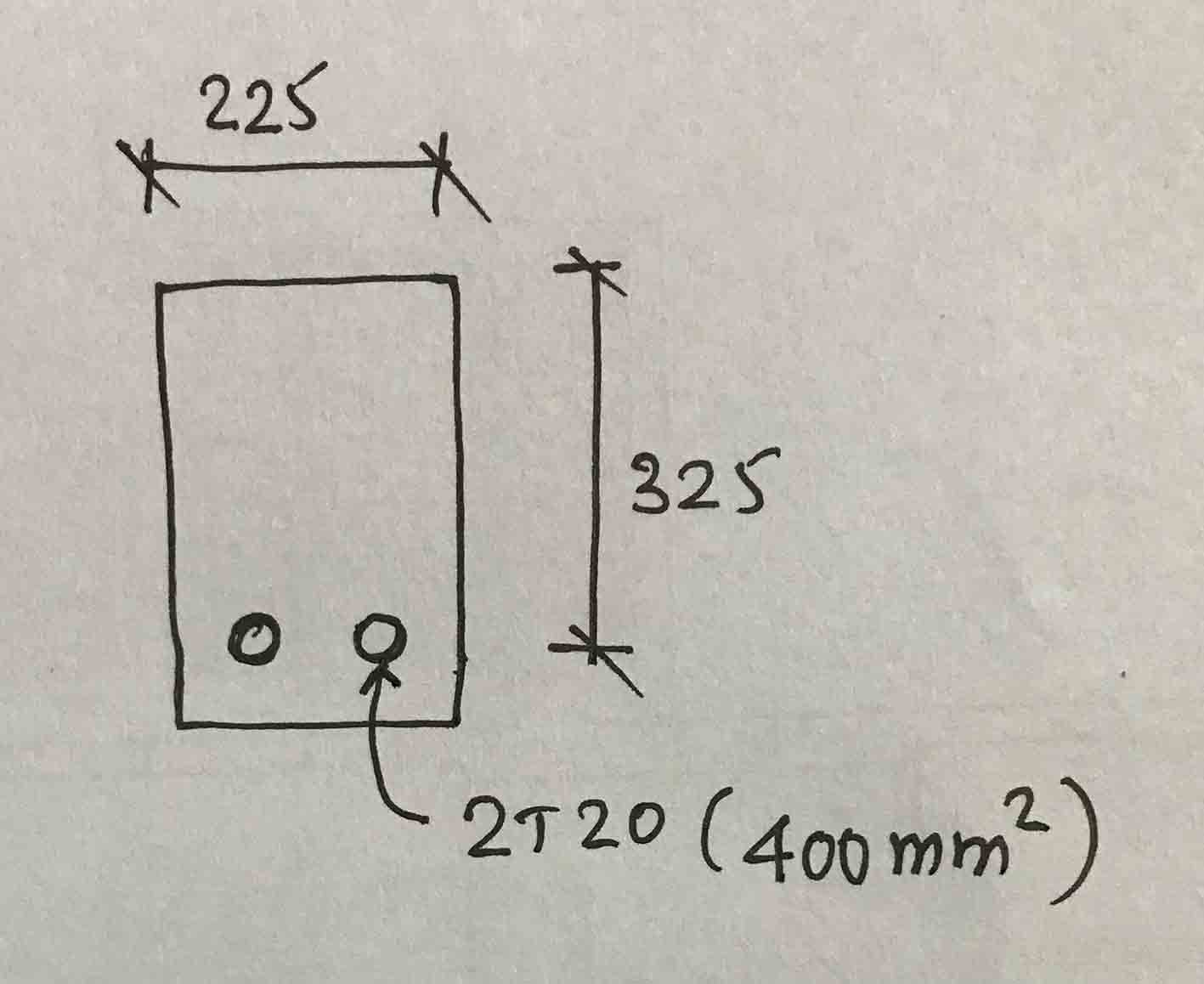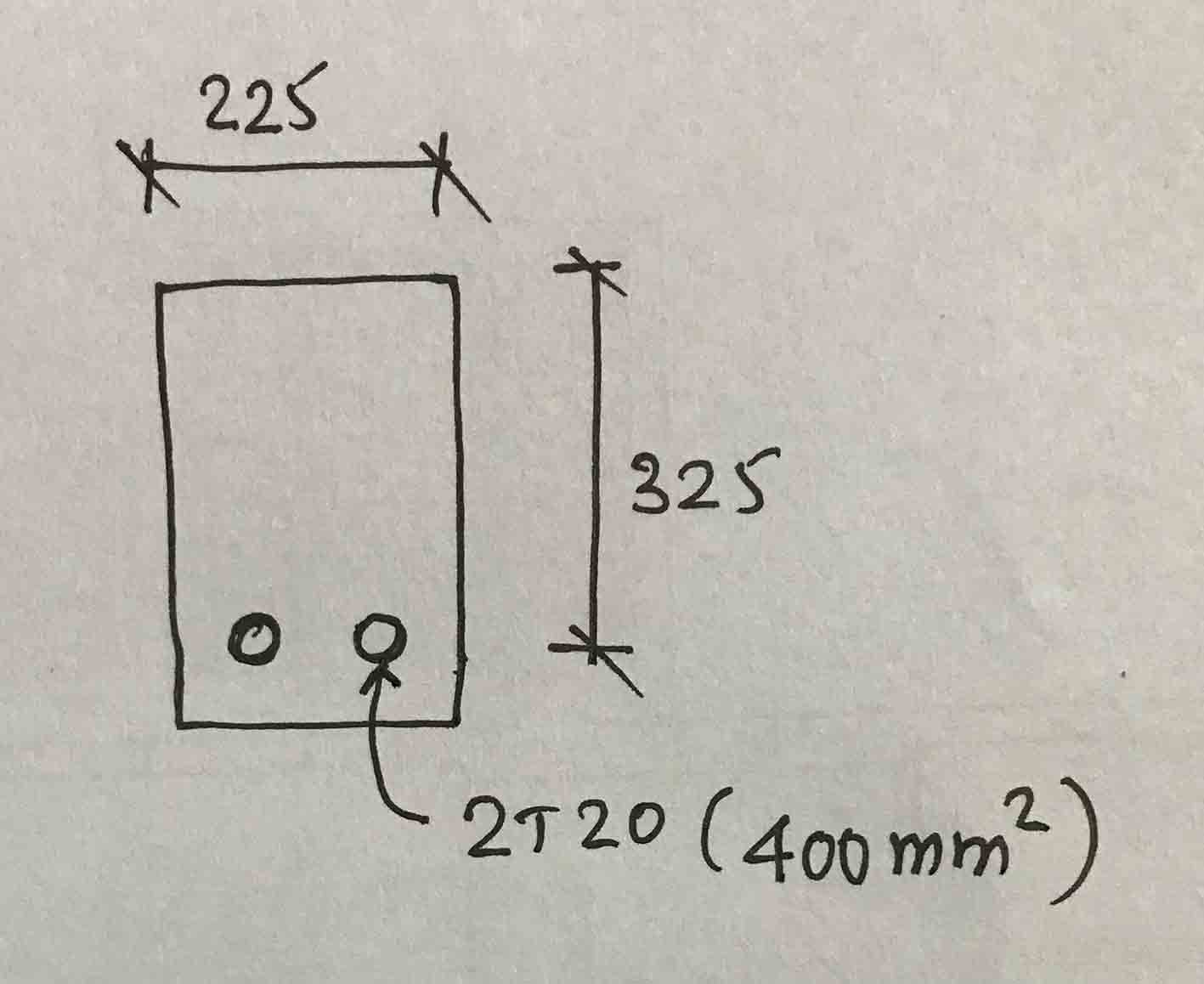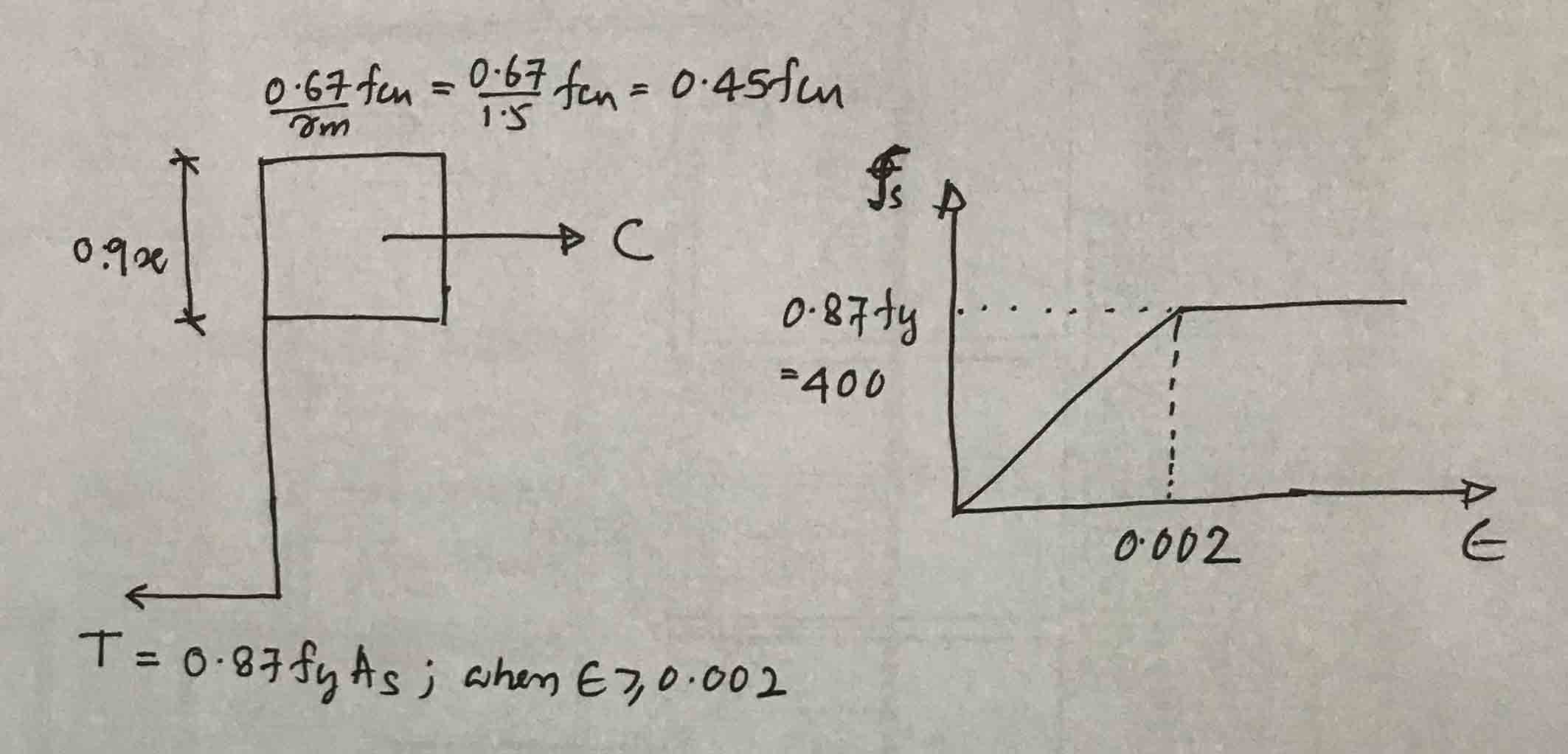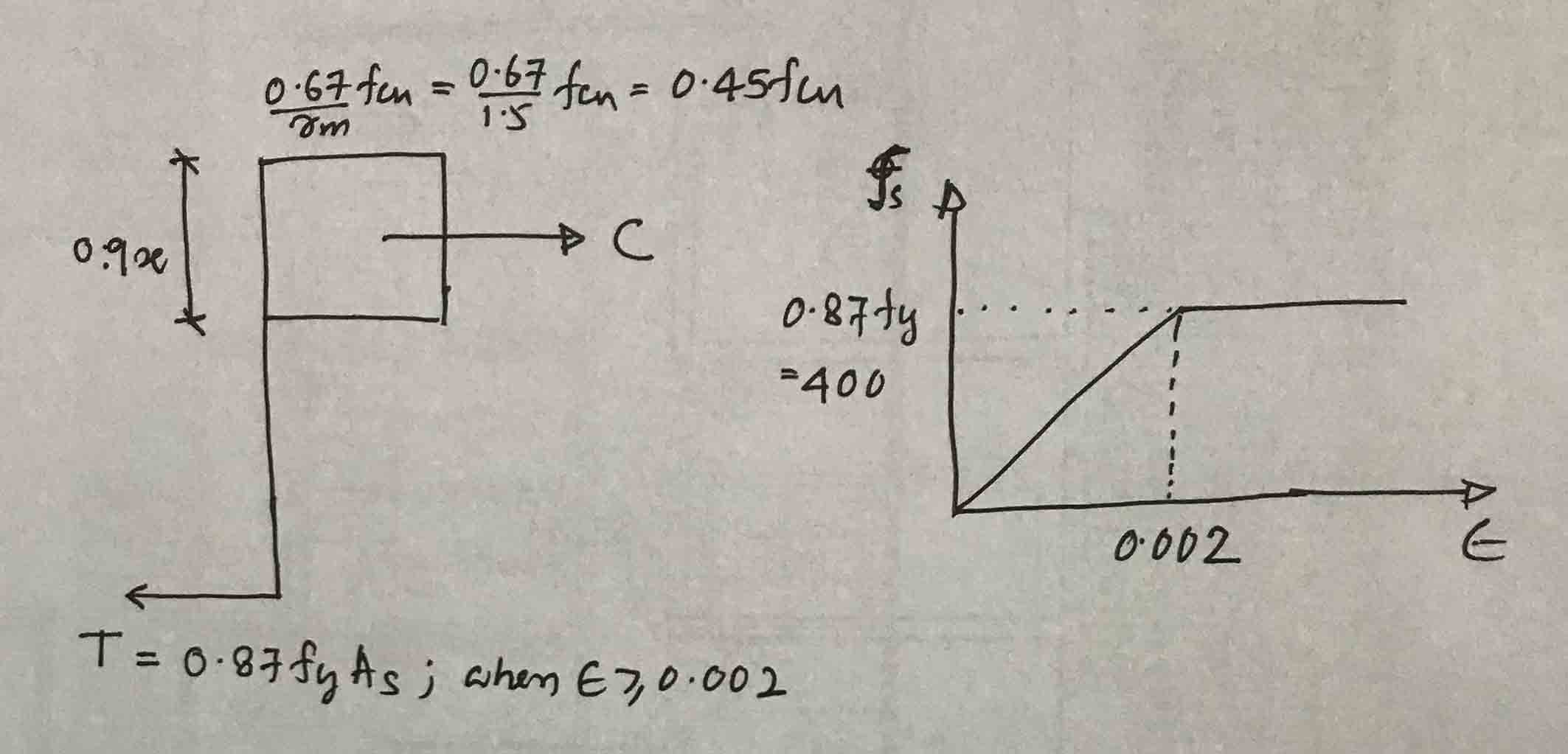For structural design, it is better for the section to be below the reinforced section than above the reinforced section.
For insufficiently reinforced sections, well in advance warning of structural failures will be given. However, excessively reinforced sections suffer sudden failures due to crushing of the concrete.
For more information on this concept, see the article below.
- Balanced, over-amplified and under-amplified
- How to check if a section is over amplified
In this article, we focus on checking whether the section is under-reinforced and the moment resistance of the under-reinforced sections.
Let's do this with a practical example.


- Reinforced single section
- F cu = 25 N/mm 2
- fy = 460 N/mm 2
Now consider the stress-strain relationship of the section.
The flow behavior of steel occurs in unreinforced sections. When the steel yields, the elongation is greater than 0.002.
Now let's assume that the steel is elastic to calculate the x/d ratio.


T = 0.87f j A S = 0.87 x 460 x 628 = 251325.6 N
C = 0.45f cu b( 0.9X ); Where X is the net depth of the shaft
C = T
0.45f cu b( 0.9X ) = 251325.6
0.45 x 25 x 225 x ( 0.9X ) = 251325.6
x = 110.32mm
x / d = 110.32 / 325 = 0.34
x/d < 0.64 reinforcement elongation and assumption is correction.
Therefore, the section is underreinforced.
Calculate the moment capacity of the section
Calculate the lever arm.
z = d – 0.45x = 325 – 0.45 x 110.32 = 275.356 mm
z / d = 275.356 / 325 = 0.85 < 0.95
Moment capacity, Mc
Mc = Tz = 251325.6 x 275.356 = 69.2 kNm
The moment capacity of the section is 69.2 kNm.
Below are some important points worth knowing.
- When element sizing is carried out in accordance with BS 8110, the x/d value is maintained at 0.5, allowing a moment redistribution of greater than 10% in the structure.
- If we assume x/d = 0.5, we are in the safe zone and to reach the equilibrium state, x/d must be increased by 0.64.
- Furthermore, we know that when concrete reaches its maximum elongation (0.0035), it will fail suddenly and without warning. If we keep x/d = 0.5 in the design, it means that we leave the concrete elongation at 0.002. (x/d = 0.5; d = 2x; if the deformation of the steel is 0.002, the deformation of the concrete in the shape of the geometry becomes 0.002).

